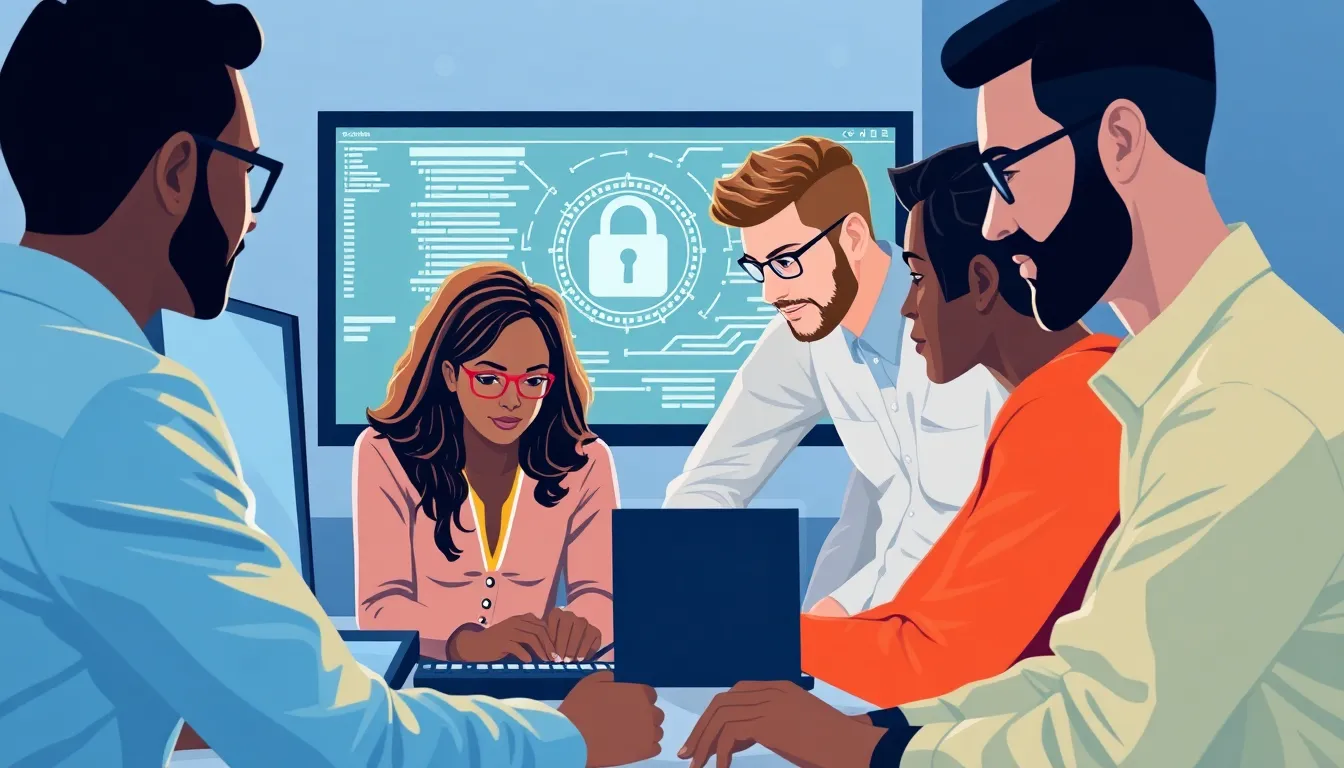In a world where hackers lurk like ninjas in the shadows, cyber security coding is the superhero we never knew we needed. With every click and keystroke, digital threats are waiting to pounce, and it’s up to savvy coders to build the walls that keep the bad guys out. Think of it as a high-stakes game of digital chess, where every line of code is a strategic move against an unseen adversary.
Table of Contents
ToggleUnderstanding Cyber Security Coding
Cyber security coding plays a vital role in safeguarding systems and data from unauthorized access. Coders face the ongoing challenge of developing secure applications that defend against a myriad of threats.
Importance of Secure Coding Practices
Secure coding practices create the foundation for trustworthy software. Developers reduce vulnerabilities by adhering to established guidelines and frameworks. Effective practices include input validation, output encoding, and proper error handling. Each step enhances security and simplifies maintenance. Frequent code reviews and thorough testing uncover potential weaknesses early. Organizations prioritize training their teams on the importance of secure coding to minimize risks. A culture of security awareness fosters resilience against evolving cyber threats.
Common Threats and Vulnerabilities
Various threats target software systems. Injection attacks pose significant risks, leading to unauthorized data access or manipulation. Cross-Site Scripting (XSS) exploits enable attackers to inject malicious scripts into trusted websites. Additionally, Buffer Overflow vulnerabilities can cause system crashes or data corruption. Insecure Direct Object References expose sensitive data when proper authorization checks are absent. Understanding these common threats allows coders to implement adequate defenses. Awareness of vulnerabilities in software frameworks further supports security measures.
Best Practices in Cyber Security Coding

Effective cyber security coding requires adherence to best practices that reduce vulnerabilities and enhance system integrity. Implementing secure coding techniques is fundamental for developing robust applications.
Input Validation and Sanitization
Input validation acts as the first line of defense against various attacks. Coders must implement strict validation criteria to ensure only legitimate input is accepted. Techniques such as whitelisting and regex can help filter harmful data. Sanitization complements validation. It eliminates any malicious data before processing, especially in web applications. Escaping special characters can prevent injection attacks. Regularly testing input handling practices ensures the application remains resilient against emerging threats.
Proper Error Handling
Proper error handling prevents attackers from exploiting system failures. Developers must design error messages that do not reveal sensitive information. Generic error responses can obscure underlying vulnerabilities. Logging errors assists with internal monitoring and debugging without exposing details externally. It is essential that sensitive data remains protected even in failure scenarios. Employing try-catch mechanisms can help manage unexpected conditions effectively. Consistent error handling practices improve application reliability and maintain user trust.
Tools and Technologies for Cyber Security Coding
Tools and technologies play a significant role in the effectiveness of cyber security coding. Utilizing the right tools enhances the ability to detect, analyze, and resolve vulnerabilities efficiently.
Integrated Development Environments (IDEs)
Integrated Development Environments, commonly known as IDEs, support coders by providing a comprehensive workspace. These environments facilitate writing secure code through features like syntax highlighting and debugging tools. Visual Studio, Eclipse, and IntelliJ IDEA are popular IDEs that streamline coding practices. Each IDE offers plugins specifically designed for secure coding, enhancing functionality and productivity. Developers benefit from integrated version control systems that help track code changes, ensuring a more organized workflow. IDEs equipped with security analysis tools can identify vulnerabilities in real time, promoting safer application development.
Static and Dynamic Analysis Tools
Static and dynamic analysis tools provide essential support for identifying coding vulnerabilities. Static analysis tools, like SonarQube and Checkmarx, examine source code without executing it, enabling early detection of security flaws. These tools enforce adherence to secure coding guidelines and best practices. Conversely, dynamic analysis tools, such as OWASP ZAP and Burp Suite, evaluate applications in runtime environments. By simulating attacks, dynamic tools reveal potential vulnerabilities that static analysis might miss. Both types of tools complement each other, ensuring comprehensive coverage for identifying and mitigating risks during the development lifecycle.
Case Studies in Cyber Security Coding
Exploring case studies highlights the real-world consequences of cyber security coding practices. Learning from these examples emphasizes the importance of secure coding techniques.
Notable Cyber Attacks Due to Poor Coding
In 2017, the Equifax breach exposed sensitive data for 147 million people. The attackers exploited an unpatched vulnerability in the Apache Struts framework. Another significant case is the Target breach, where hackers accessed 40 million credit card numbers through compromised vendor systems. Poor input validation allowed attackers to insert malicious code, leading to severe financial and reputational damage. These incidents highlight how inadequate coding practices create vulnerabilities that cybercriminals can exploit.
Lessons Learned from Successful Security Implementations
Successful security implementations reveal best practices for coding securely. The Facebook bug bounty program encourages ethical hackers to report vulnerabilities, which enhances application security. Additionally, Google employs secure coding guidelines that incorporate threat modeling and code reviews to prevent exploits. Companies like Microsoft enforce secure development frameworks that prioritize risk management. Such practices demonstrate the effectiveness of proactive security measures in minimizing vulnerabilities, fostering a culture of vigilance against emerging threats.
Cyber security coding stands as a vital shield against the relentless tide of digital threats. By implementing secure coding practices and leveraging advanced tools, coders can significantly reduce vulnerabilities in their applications. The commitment to regular code reviews and fostering a security-minded culture within organizations enhances resilience against evolving cyber risks.
Real-world examples underscore the importance of robust coding techniques in preventing breaches and safeguarding sensitive information. As the landscape of cyber threats continues to change, the role of skilled coders will remain crucial in defending against potential attacks. Prioritizing security in every line of code not only protects systems but also builds trust with users, creating a safer digital environment for everyone.




